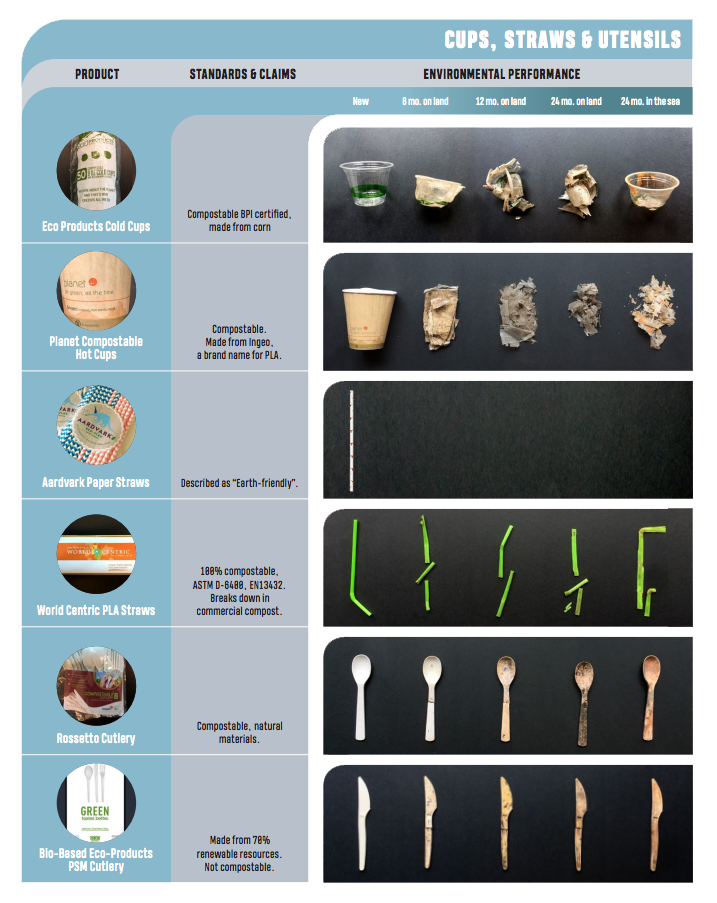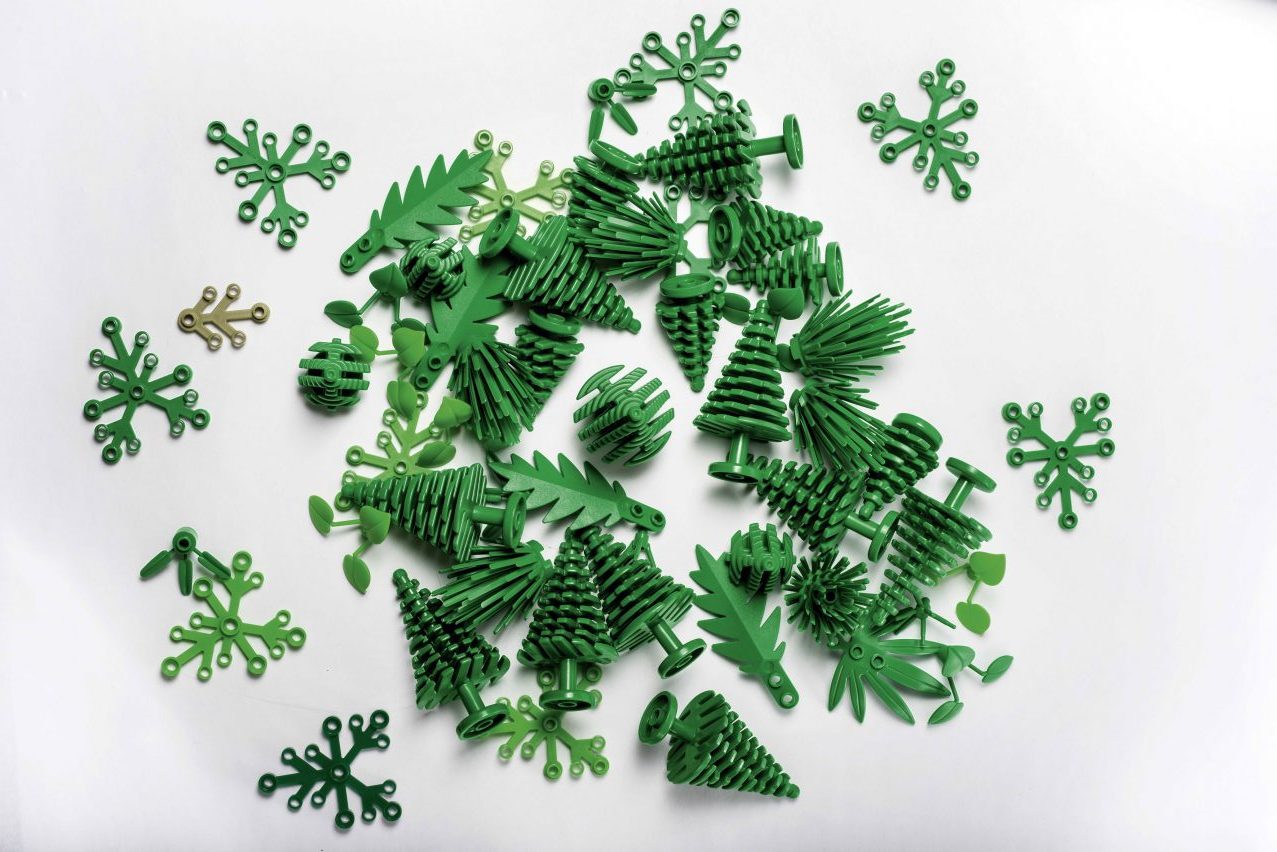It’s no surprise that plastic, the material quite literally designed to last forever, is starting to pile so high that the hashtag #PlanetorPlastic is now trending. You’ve heard the stats: by the year 2050 there will be more plastic in our oceans than fish, by weight. The world has produced over 9 billion tons of plastic since the 1950’s. Only 9% of all plastic ever produced has been properly recycled. There are 13x more pieces of plastic in our oceans than stars in our galaxy. Need we say more?
Enter: bioplastics. An increasingly common, guilt-free alternative to traditional plastics. Plastics made from plant-based materials – the solution to the plastic crisis! Now the bioplastics we use will effortlessly decompose in the environment and we have nothing to worry about! Right? Wrong.
While the terms bioplastic, biodegradable, compostable, or plant-based may sound encouraging, this mishmash of advertising labels can be used to lead us blindly against our greenest intentions. So, what’s the truth behind these products? For those of you aren’t interested in the intimate details, here’s what we’re getting at.
”Long story short, the vast majority of bioplastic cups, cutlery, take-away containers, etc., will degrade in the environment, land or sea, just like traditional plastic… they won’t.

The graphic above was taken from case study by 5Gyres, which focused on understanding the performance of bioplastic products and packaging in two realistic settings. These settings—the ocean and a typical backyard compost bin—were established for two years. Twenty different items were placed in each setting. The results show that most bioplastic products persist in the environment like their petroleum-based plastic counterparts.
Bio-based plastics are created from renewable, plant-based biomass and avoid the use of fossil fuels in their production. Oftentimes, consumers assume that plant-based plastics will biodegrade or compost. If there’s a leaf on the packaging, there’s no way it’s bad for the environment, right? Unfortunately, the feedstock (what the bio-plastics are made from) does not determine whether the product is degradable or compostable.
Degradability and compostability are determined by molecular structure. As such, the term bioplastic holds no indication of how the product will perform in the environment and refers only to whether the product was made with a renewable feedstock, as opposed to a fossil-fuel derived plastic.
Now that we’ve used it, how do we get rid of it? In order to avoid greenwashing, it is important to understand the myriad of ways bioplastics can be disposed of.
Recyclable vs. Degradable vs. Biodegradable vs. Compostable
Recyclable: Recycling is often a for profit-based business so, although most items may theoretically be recycled, only a small amount actually are recycled, because the product will only be recycled if someone can make money off of it. Both plant-based and petroleum-based plastics have the option of being recycled. Only bio-plastics can tout the label of biodegradation or compostability. Unfortunately, if the recycling batch is contaminated, then the entire batch is rejected and sent to a landfill, resulting in a wasted recycling effort all together. Contamination occurs when incorrect items (ie. plastic bags) OR correct items that are prepared the wrong way (ie. recyclable food containers that haven’t been properly cleaned) are put into the system.
Degradable: All plastic degrades, but it never disappears. Ocean tides and sunlight break plastic into tinier and tinier pieces – micro plastics – that persist in the environment forever. Beware the difference between degradable and biodegradable. Plastics photo-degrade, but they do not bio-degrade.
Biodegradable: Indicates that items will break down naturally in the environment, decomposing in weeks to months.
Compostable: An industrial compost site is needed to support the biodegradation of this product. Unfortunately, most bioplastics on the market won’t break down in the environment like they are advertised to. Many products sporting the “compostable” label are designed to be composted in industrial compost facilities under constant temperatures higher than 50°C (122°F), rather than backyard “cold” composts. Worse yet – all compostable bioplastics that get tossed into recycling bins or trash bins won’t be sorted out and returned to composting facilities. Instead, they end up in landfills or back in the environment, where the conditions don’t match that of an industrial composting facility. So, unless properly returned to an industrial composting facility, most compostable bioplastics are just as pervasive in the environment as their oil-based counterparts.
If this all seems confusing, it’s because it is. While the ideas of recycling and industrial composting are commendable, they require a higher level of understanding to be used effectively as well as an efficient community-based waste management system able to collect, sort, and process these recyclable and compostable products.
Long story long, while bioplastics represent a step in the right, eco-conscious direction, they should not be confused as a more sustainable alternative to plastic, let alone a solution to the plastic pollution crisis.
At the end of the day, reusable and refillable alternatives will always conquer single-use plastic throwaways, plant-based or not. The hierarchy should always remain: reduce, reuse and refill, and finally, if you must create disposable waste, recycle.
This article was adapted from the 5Gyres report, Plastics BAN List 2.0, which presents a case study of bioplastic degradation as it relates to consumer expectations to answer the question, “Are bioplastics the answer?”



